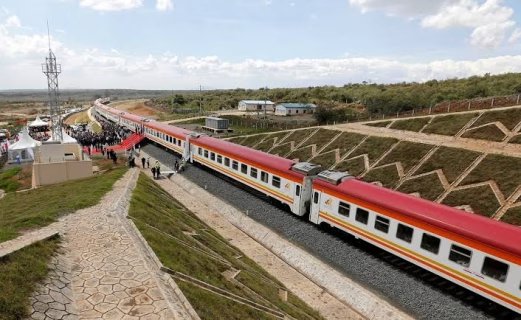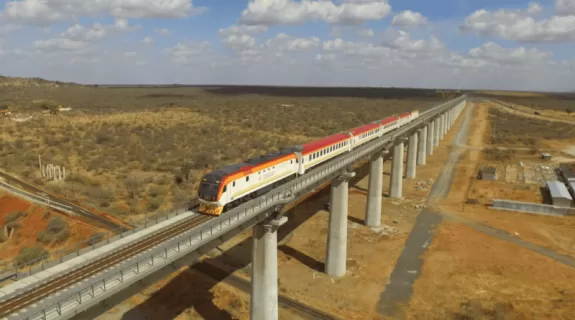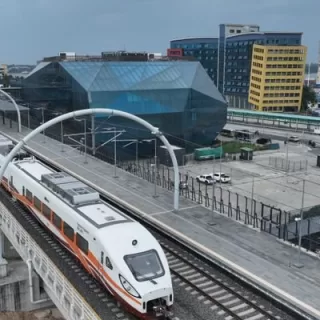The East Africa Standard Gauge Railway (SGR) project represents an ambitious, multi-billion-dollar endeavor by several East African Community (EAC) member states, primarily Kenya and Tanzania, to modernize the region’s transport network and promote economic integration. While Kenya’s SGR (Mombasa-Nairobi) is operational and largely Chinese-funded, Tanzania is concurrently building its own electrified SGR network (Dar es Salaam-Kigoma/Mwanza) with Turkish and Chinese involvement, aiming to connect landlocked neighbors like Rwanda, Burundi, and the DRC via the Central Corridor. Despite facing initial financing, political, and technical harmonization challenges, the collective goal is to drastically cut freight and passenger transit times, reduce transport costs, and enhance the competitiveness of East African ports. This massive focus on new, modern rail infrastructure is happening at the same time as the Tazara rehabilitation project, which, through a recent $1.4 billion investment and 30-year concession from China, seeks to revitalize the existing 1,860-kilometer Tanzania-Zambia Railway to significantly increase its annual freight capacity and offer an additional, modernized rail route for mineral exports from Southern Africa to the port of Dar es Salaam.
Also, the joint SGR development seek to cut logistics costs. The overall vision is to create two major connected rail networks: the Northern Corridor SGR running from Kenya’s Port of Mombasa through Nairobi to Malaba, and extending to Kampala, Kigali, and Juba; and the Central Corridor SGR championed by Tanzania connecting its Port of Dar es Salaam to landlocked neighbors like Rwanda, Burundi, and the Democratic Republic of Congo (DRC).

In a similar context, Djibouti, Ethiopia, South Sudan, and Uganda also seek to develop a regional transport corridor which is known as the DESSU Corridor. Also, just like the East African SGR Project, this corridor seeks to promote economic integration among the participants.

Reported on September 4, 2025
The East African Community (EAC) member states have revealed ambitious plans that will foresee the development of railway infrastructure. The plans entail developing an expansive East Africa’s 6,220-Kilometer Standard Gauge Railway (SGR) Project. This railway network is expected to link all the eight member states upon completion.
This ambitious plan was announced at the ministerial session of the 19th EAC Sectoral Council on Transport, Communications, and Meteorology that was recently held in Arusha, Tanzania.
Notably, it is quite commendable on how African countries are making steps in developing their railway infrastructure. Recently, Morocco launched the upgrade works of its Kentira-Marrakesh high-speed rail line in Casablanca. These rail projects will be key players in developing of the economies of these countries.
Also read: Tanzania SGR Operations Approach as the Country Launches East Africa’s First Electric Train
Speaking during the session, the EAC Deputy Secretary General in charge of Infrastructure, Productive, Social and Political Sectors, Mr. Andrea Aguer Ariik Maleuth addresed the sitting reagrding the project. “Both Kenya and Tanzania have taken the lead in the development of the East Africa’s Standard Gauge Railway (SGR) Project,” he mentioned.
Kenya’s Ambition in Extending the Standard Gauge Railway (SGR)
Kenya’s president, William Ruto, announced plans to extend the Standard Gauge Railway from Naivasha. The plan is to ensure the rail extends to Rwanda and the Democratic Republic of Congo (DRC) to bolster trade and investment. Opening of the East Africa Community Inter-Parliamentary Games in Mombasa, Ruto emphasized the project’s importance. The main aim of the rail is to facilitate infrastructure expansion for regional trade. Moreover, he stated that the SGR extension will facilitate easier transportation across borders. This is expected to enhance connectivity among East African nations and ensure an interlinked system. “We have now agreed with Uganda, Rwanda, and DRC that the SGR will be extended from Naivasha to Uganda, Rwanda, and DRC so that we can use it whenever we are going to these places,” he said. He further reiterated his point that the infrastructure is fundamental to the integration of the East African region.

Kenya’s Significance of Extending the SGR
According to Ruto, the Standard Gauge Railway (SGR) will significantly boost intra-regional trade, which currently stands at 28%. Furthermore, it is expected to contribute to the broader goals of economic integration within the East African Community. Other countries have already implemented measures to ensure their end of the SGR is progressing. Uganda has already launched ground operations for the construction of the SGR. The first phase of the project is set to begin with a 272km stretch from Malaba to Kampala. Uganda’s leader, Yoweri Museveni revealed that the construction would progress in various phases, ensuring viable implementation. The Malaba to Kampala section is expected to be completed in approximately four years. Kenya also seeks to fast track their end on the Naivasha to Kisumu SGR line. Operations are expected to commence in January 2025.
The Current State of Affairs of the East Africa’s Standard Gauge Railway (SGR) Project
“A total length of 1,120 kilometers SGR is already currently operational in both Kenya and Tanzania. Moreover, another additional 1,100 kilometers is currently under construction in Tanzania. Approximately 4,000 kilometers are in project preparation across all the member states,” Mr. Ariik stated.
Additionally, he did inform the ministerial session stating, “The EAC is currently undertaking an endeavor to harmonize standards.” The standards are to make sure that there will be seamless operations across the regional railway network.”
The EAC’s ambitious vision for embarking on this integrated mega railway project gained momentum. This was catalyzed by Tanzania just recently launching SGR services linking Dar es Salaam to Dodoma. Also, Uganda embarked on plans of setting up its SGR links to the surrounding countries. The countries include Kenya, Rwanda, Democratic Republic of Congo, and even South Sudan.
Tanzania’s Milestone on the Project
It is also quite remarkable to note the milestone that Tanzania achieved in promoting this mega East Africa’s Standard Gauge Railway (SGR) Project. “Tanzania became the first country in the region to set up a fully electrified Standard Gauge Railway System.” a report said. “This project is foreseen to also boost the economy of Tanzania in general by facilitating transportation of goods to the port city of Dar es Salaam for export.” the report added.

Also read: Kenya Standard Gauge Railway (Kenya SGR) project
As revealed by Mr. Ariik, “In order to achieve seamless connectivity within the railway system, they will have to depend on joint resource mobilization and coordination.” “This will be useful in that it will serve to avoid gap that could delay the progress of the project.”
Meanwhile the Cabinet Secretary in charge of roads and transport in Kenya, Davis Chirchir, called for the removal of barriers to transportation. He noted, “the removal of these barriers would boost cross-border trade.”
“The investments in the Northern and Central Transport Corridors foresee will facilitate the movement of people and goods within EAC. This will therefore boost intra-regional trade,” the Cabinet Secretary said.
“Other regions such as Europe, Asia, and Latin America had attained intra-regional trade levels over 60%.” he pointed out.
Also read: Construction of Uganda’s Longest Rail: The Kampala to Malaba SGR

